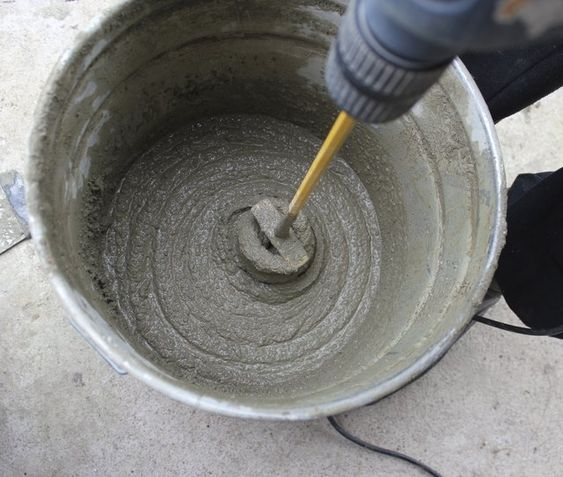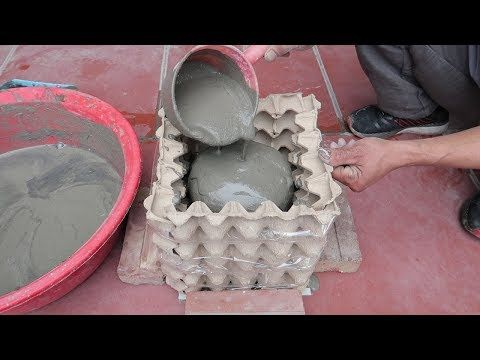Cement is used to bind together the components of concrete. It is also known as hydraulic cement or Portland cement, and it contains a mixture of fine powder (called aggregate) and water.
The aggregate consists of sand, gravel, crushed rock and other fine materials.
The water component includes lime or gypsum, which reacts with the cement to produce calcium hydroxide (Ca(OH)2) and calcium sulphate (CaSO4).

Source: Pinterest
The most common type of cement contains about 25% fly ash, which is made from the burning of coal in power plants. Ash is made up of silica sand, silica gels, quartz sands and feldspars.
See also about: Cement Density
What is cement?

Source: Pinterest
Cement is a material that consists of a mixture of fine and coarse particles. These aggregates are held together by the cementing action of hydration products. Cement is used in construction to make mortar and concrete. Cement is also used to repair concrete structures or to provide concrete reinforcement as in reinforced concrete.
Cement is a combination of sand, gravel and water. The composition of cement is different depending on the type of cement used. Cement is mainly used in construction, and can be used for building walls, floors, and ceilings.
Ingredients of cement: What is the composition of cement?
The main ingredients in cement are sand, clay and water. These three ingredients are mixed to form a paste. The paste is then mixed with other additives, such as lime or silica fume, which helps make concrete stronger. The blend is then poured into moulds, where it hardens into concrete.
Various ingredients of cement
- Limestone: Limestone contains calcium carbonate and has three different types of minerals within it: calcite, dolomite, and aragonite. These minerals give cement its hardness as well as its ability to absorb water. Calcite forms the largest percentage of this mineral by weight. However, it doesn’t contribute much in terms of volume due to its low density. Compared with other components such as silica gel or quartz that make up other parts of cement products like mortar etc.
- Silica: About 17 to 25% of cement ingredients are silicon dioxide, which is derived from sand, argillaceous rock, etc. For cement to be strong, sufficient quantities of silica are needed to form di-calcium and tri-calcium silicates.
- Alumina: Aluminium oxide is the form of alumina in cement. The range of alkali in cement should be 3 to 8%. Among other things, it is derived from bauxite, clay, etc. Cement is characterised by quick setting due to the presence of alumina.
- Iron oxide: Iron oxide is primarily used to colour cement. Iron oxide reacts with aluminium and calcium at high temperatures to form tricalcium aluminoferrite. Cement’s strength and hardness properties are imparted by the resultant product.
- Magnesia: A small amount of magnesium in cement imparts hardness and colour to the material. Cement that has more than 3% moisture content becomes unsound, and its strength is reduced.
- Calcium sulphate: Cement contains gypsum, which is a source of calcium sulphate. Along with limestone, it can be found. Approximately 1 to 3% of the population is exposed to it.
- Sulphur: The amount of sulphur or sulphur trioxide in cement ranges from 1 to 3%. If there is an excess amount of sulphur, the cement becomes unsound. Water and cement are replaced by sulphur in sulphur-based concrete, which operates in its molten state as a binder. During the heating process, sulphur is converted to molten sulphur, which is then cooled to form hardened sulphur.
- Alkalis: There is usually a range of 0.1 to 1% alkalis in cement, such as soda and potash. At the time of heating, most alkalis are carried away by flue gases during cement manufacturing. Hence, cement contains very small amounts of alkalis. If the amount of alkalis in cement exceeds 1%, its properties may be adversely affected. Such as alkali-aggregate reaction, efflorescence, and staining.
Uses of cement
Cement can be used for many different purposes, including making concrete blocks, constructing roads, forming plaster for walls, repairing damage caused by earthquakes or floods etc.
Cement is often used in place of lime or sand when making mortar, as it is cheaper and easier to obtain. This makes it more common in regions where limestone or sandstone is not readily available. Cement’s setting time is longer than that of lime mortars but short enough for most purposes.
Cement is utilised in construction to make concrete, which is an important part of many infrastructure projects like roads or buildings. It can also be utilised for other purposes, such as making mortar for masonry walls or roofing materials.
FAQs
Which is the main material of cement?
Cement is made with limestone, clay, and marl as the main raw materials.
How does concrete consist of its 5 ingredients?
The basic ingredients of concrete are cement, air, water, sand, and gravel.
Housing News Desk is the news desk of leading online real estate portal, Housing.com. Housing News Desk focuses on a variety of topics such as real estate laws, taxes, current news, property trends, home loans, rentals, décor, green homes, home improvement, etc. The main objective of the news desk, is to cover the real estate sector from the perspective of providing information that is useful to the end-user.
Facebook: https://www.facebook.com/housing.com/
Twitter: https://twitter.com/Housing
Email: [email protected]











